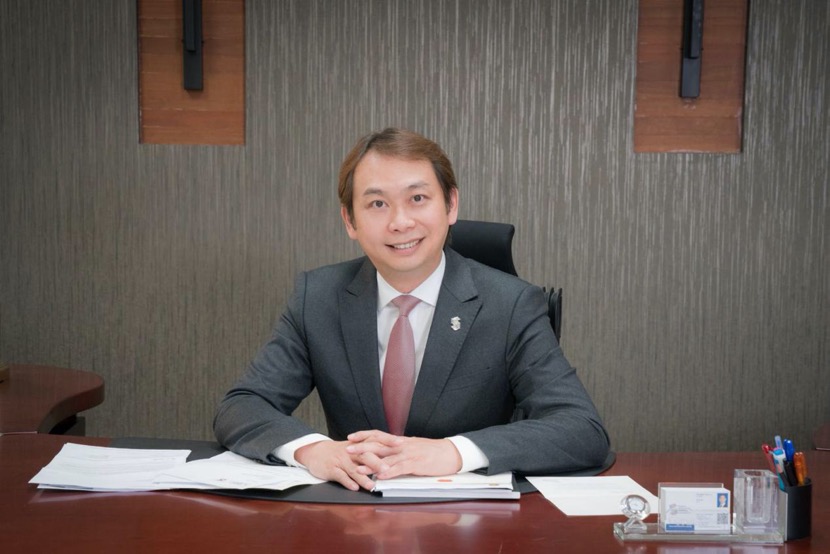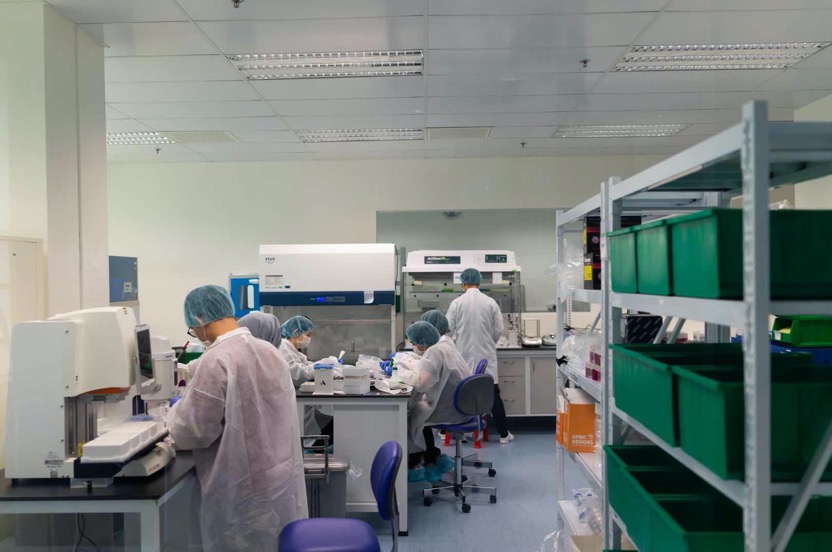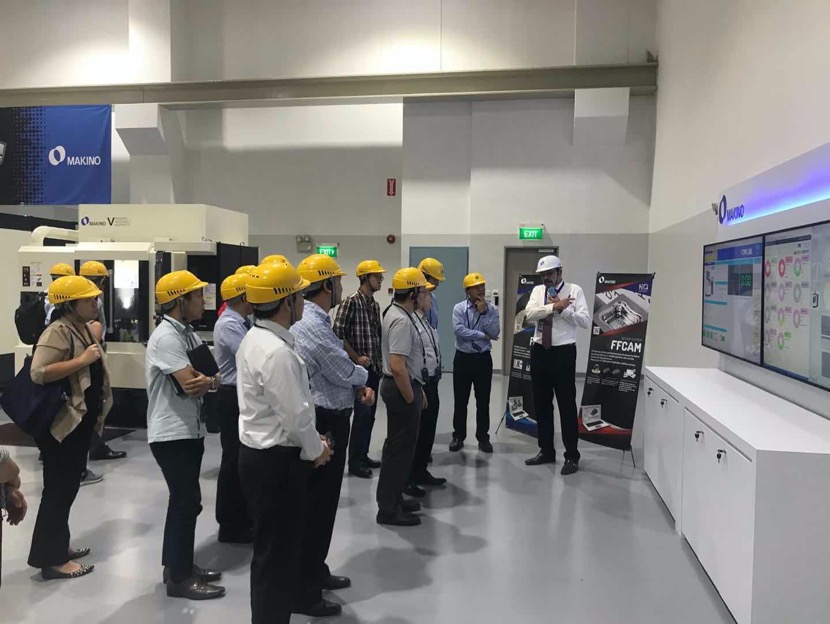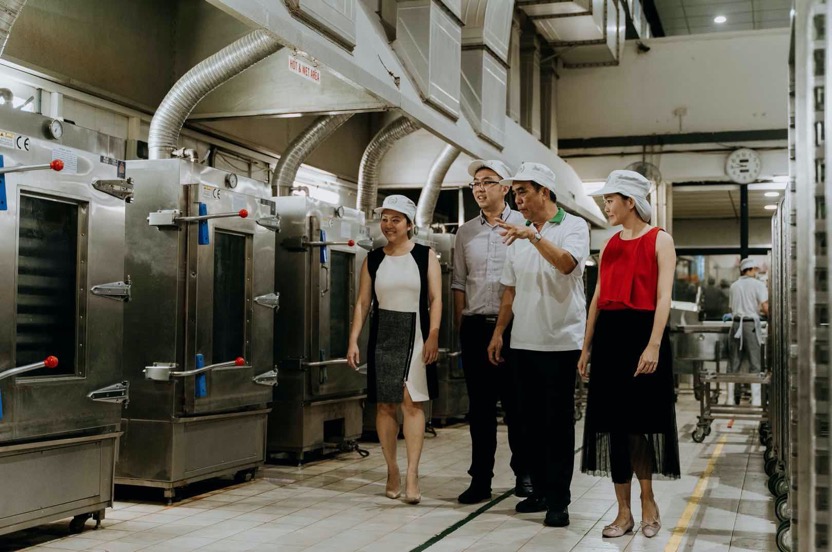CEA“共同抗疫”栏目访谈:新加坡制造商总会会长符标熊先生
日期: 12 8 月, 2020
以数字化解决方案推动新加坡制造业的创新与转型
2020年7月29日,新加坡制造商总会(SMF)大厦。相较于所在地中峇鲁街区的沉静,SMF大厦内的工作景象却是一片繁忙。SMF会长符标熊一天的工作日程被排得满满当当,对各式商客的来访积极地应接,大多数的工作目标指向一处:谈合作,搭桥梁。制造商们在疫情后时期的“出路”问题,让这位历来以行动著称的会长也感受到了空前的挑战。
无疑,疫情引发的行业震荡,也是符标熊和SMF所有成员所遇到的前所未有的时代挑战。疫情使得任何一家制造商企业都无法独善其身。3000多家会员企业,在这个大家庭里,SMF能够为他们所做的,事实上也是在为新加坡制造商整个行业去“蹚”一条新路、创一个未来。本期“共同抗疫”栏目特别邀请到了SMF会长符标熊先生。这是SMF成立88年来所面对过的较为艰巨的时段,但在接受栏目采访中,符标熊会长对制造商的总体转型充满着期待。他认为,虽然面临诸多的挑战和不确定因素,以数字化解决方案为方向的企业转型之路,已成为了众多制造企业的不二选择。COVID-19消退后,SMF有信心带领更多制造商企业以新的经营方式,稳步地迈向工业4.0阶段。

Mr. Douglas Foo, President of Singapore Manufacturing Federation
(一)作为新加坡新知名的制造商行业组织,SMF在业内享有较高的知名度,后疫情时期,SMF在帮助企业恢复生产经营方面有哪些适应市场的新计划、新举措?
符标熊:新加坡制造商总会致力于帮助会员通过不断的培训,以及提高采纳数字化的能力,来建设一支具有弹性的制造业劳动力队伍。为此,协会通过以下主要项目协助制造业,支持企业的复苏工作:
一是数码项目管理服务(DPMS)——该计划由一名顾问为中小企业提供项目管理,以实施预先批准的数字解决方案。工程费用由政府补贴。二是企业学习中心 (CCL)为企业开设短期课程。学习中心每年举办600多个培训班,提供200多个内部课程,主题从运营管理到专业认证都有覆盖。三是CCL还管理制造业的职业转换计划(PCP),以重新培养工人的技能,使之在职业生涯中期转向制造业。四是我们鼓励会员企业去寻找新的领域和创新。我们的商业模式创新(BMI4.0)顾问可以为会员提供服务,帮助企业保持竞争力。到目前为止,已有数百家公司和管理人员从该项目中获益。五是促进国际化,作为行业协会,我们一直在为相关国家和地区的企业安排业务交流会,以鼓励新加坡企业在我们的沿海地区开拓新的机会。SMF每年组织40多个贸易展览会和商务代表团,以帮助我们的会员开拓新市场。虽然短期内,制造业企业可能难以去其他国家开拓新市场,但SMF鼓励会员不断通过创新来审视其业务模型,以准备在COVID-19消退,世界开始兴起新的经营方式时,随时准备抓住机遇。
(二)新加坡政府带领进入恢复社会经济活动第二阶段已有月余,您如何看待制造业在疫情后时期的走向?能否分析其发展态势?
符标熊:在制造业领域,新加坡恢复第二阶段中所呈现的趋势体现在三个方面:一是更加重视安全和健康,很多制造业企业将不得不继续投资于安全管理所需的资源,包括准备好个人防护用品、密集的清洁时间表和工人之间的更多空间。这可能会在一段时间内影响制造业的经营决策。二是更多的制造业企业逐步都在采用数字化解决方案。我们看到,在防疫阻断期间,数字化项目的使用率有所增加,接受调查的会员也表示,采用新数字解决方案的比例在增加,95%采用新解决方案的人表示,他们将继续使用所采用的数字平台。这场大流行确实刺激了商业界采用技术,为了遵守控制病毒传播而施加的物理距离规则,这是必要条件。希望企业能够继续以更快的速度采用和整合数字化解决方案,以推动他们的转型之旅,为迎接新经济做好准备。第三,制造业企业投入财力培训未来的劳动力。推动数字化的举措最初是在2016年预算案中提出,此后一直是政府关注的领域。 随后,宣布了行业转型图(ITM),这些ITM包括了对各种行业和企业进行数字化的路线图。 这些ITM涵盖23个行业,在2019年的预算中,宣布的预算计划为43亿新元。
在新加坡政府的这项改革预算中,有36亿新元用于培训和再培训,以帮助工人在不断变化的环境中茁壮成长。这是一项重要的投资,因为真正将制造业从以前的工业化阶段转变为工业4.0的,是劳动力数字化和转型所需的大量新技能。

MiRXES Manufacturing Pte Ltd.
(三)SMF在新加坡已有88年的发展历史,在帮助企业走向国际化方面您认为有哪些成功的经验?
符标熊:对新加坡来说,早在我们还是英国殖民地的一个重要贸易港时,国际贸易就一直是新加坡经济的重要支柱。成为一个独立国家后,我们决定保持对外贸易开放,欢迎外国投资,并为跨国公司在新加坡设立业务创造机会,这一决定被证明卓有成效。由于我们的国内市场很小,国际化对于我们制造商的发展来说始终是必不可少的。随着疫情的爆发,供应链的弹性和多样化对企业战略至关重要。拥有忠实供应商和替代供应商的公司比没有供应商的公司表现更好。我相信当前的挑战将使我们更努力地建立更牢固的联系,而不是孤立地追求各自的利益。
(四)新中两国在制造业领域的合作,您认为新时期有哪些新的空间和机遇?
符标熊:在2019年10月于新加坡举行的第21届新加坡-山东经济贸易理事会(SSBC)会议上,新加坡贸工部兼教育部高级政务部长徐芳达(Chee Hong Tat)先生表示,新加坡和中国之间开展合作有三个主要途径,一是互联互通和贸易;二是现代服务业;三是可持续发展。我认为这些为新加坡和中国的制造商提供了许多有前景的机会。这些都是能从知识和专业知识共享中受益的关键增长领域,我相信我们有很多东西可以相互学习。
新加坡作为贸易中心的优势造就了一大批在中国找到机会的物流和供应链供应商。事实上,我非常高兴地强调,我们SMF的会员之一YCH集团正在青岛建造一个物流中心,并希望在发展关键基础设施方面发挥不可或缺的作用,这将进一步促进互联互通和贸易重点领域。
我希望中国的制造商能将新加坡视为进入东盟市场的门户。到2030年,东盟将成为全球第四大经济体,成为具有巨大增长潜力的地缘政治中心。东盟拥有逾6.3亿人口,其中有一个庞大的中产阶级正在崛起。到2022年,将有5000万人加入中产阶级行列,再加上进入数字经济的机会和向外看的视角。这将使中国商品和服务的潜在消费者及客户至少增加5000万。在当前贸易紧张局势下,我希望我们对自由贸易和经济一体化的持续承诺将继续给东盟和中国的企业带来信心,使他们能够接触并形成有意义的伙伴关系,以实现持续发展。

Makino Asia Pte Ltd.
(五)对于新加坡政府和中国政府在扶助制造业企业方面您有哪些期待和建设性意见?
符标熊:在过去几年中,我们看到全球贸易紧张局势加剧。各国都有向内看并变得更加民族主义的趋势。不幸的是,Covid-19可能会使这种情况更加恶化。我们所有人都应该担心这是否会导致去全球化和贸易保护主义。我们必须竭尽全力维持和促进自由贸易,并确保我们对COVID-19疫情的担忧不会导致过激反应。
“一带一路”倡议(简称BRI)是一项由中国发起,跨越不同大洲的全球性倡议,一些项目的进展也受到了疫情的影响。 然而,令人鼓舞的是,“一带一路”倡议继续通过数字丝绸之路和健康丝绸之路将各国联系起来,这是自2017年以来已被纳入“一带一路”倡议的两个框架。
随着全球经济从COVID-19大流行的影响中恢复过来,国际合作仍将是经济复苏的关键,并且将需要在全球范围内做出巨大努力以使贸易路线正常化并刺激全球需求。由于“一带一路”倡议涉及的项目和金融投资规模巨大,我们希望其全面恢复能成为各国进行新投资和贸易的动力。我希望制造商能够利用这种好转来构建新的、有弹性的关系。
(六)在当前制造业企业面临转型升级的关键时期,您认为制造业企业存在哪些瓶颈和困难?制造业企业如何更快地向数字化“转身”?
符标熊:中小企业通常优先考虑业务需求和日常运营。在2019年COVID-19爆发前对SMF会员群进行的一项调查显示,公司在未来5年的三大优先事项是销售增长和重新审视产品和服务,以增加对客户的关注,开发系统以通过数据优化业务排在第三位。由此可见,企业生存被视为头等大事。
作为一个行业协会和商会(TAC),SMF一直在寻找方法,以便在合作伙伴企业不断审查其商业模式的同时,有效地形成并制定相关计划。在我们与企业主的对话中,我们发现,企业更倾向于在更广泛的战略层面上实施项目。2019年,SMF推出了“面向工业4.0的业务重塑”课程,以帮助会员企业走上转型之路,将数字解决方案与商业模式调整捆绑在一起。这得到了我们会员的好评。
企业认识到人力资本是产业转型的关键,并将培训优先于基础设施投资。关于中小企业转型的方法,在最近对我们的成员进行的一项调查中,按照成员的调查顺序,排名前三位的措施是提升劳动力技能、对不同职能的员工进行再培训以及对生产线进行现代化以实现未来的自动化。看到企业愿意投资于劳动力培养,并认识到人力资本在转型过程中至关重要,我们感到非常振奋。
SMF继续看到我们的人才培养计划被广泛采用。对于寻求新职位的专业人士、经理和高管(PME),SMF已协助2300多名PME转换到新的职业生涯。PME们通过PCP Broad Based、Overseas和P-Max等课程获得职业中期转换所需的各项技能。

Lim Kee Food Manufacturing Pte Ltd.
(七)围绕“一带一路”项目,在制造业商会带领下,今年目前取得的成果有哪些?接下来的2020年下半年还会有哪些令人瞩目的举措和规划?
符标熊:如前所述,SMF的一名会员参与了物流枢纽项目。另一名会员盛裕集团(Surbana Jurong)参与了总体规划和城市发展。我认为许多项目尚处于初期阶段,因此很难评估成果。在普华永道(PWC)进行的2019年调查中,只有35%的受访者拥有正在进行的BRI项目或计划开始进行项目。45%的受访者计划在未来3年内开始BRI项目。
“一带一路”倡议下确定的机会最多的三大行业包括智慧城市和城市发展、工业区和经济特区(SEZ)以及道路交通 。2019年8月,中国宣布在江苏、山东、河北、黑龙江、广西和云南等省设立6个新的自由贸易试验区。我们很可能会在不久的将来在这些区域看到新加坡企业的项目启动。
(八)新加坡政府推出预算案助力企业渡过难关,您如何看待,并认为制造业会员企业应如何抓住机遇?
符标熊:新加坡政府预算关注的许多重点一直是支持当地就业和帮助企业渡过新冠疫情。然而,在我看来,政府对培训的重大投资更为重要。在这段非常时期,有许多支持来鼓励和资助劳动力的培训工作,从停工人员的工资支持到课程的共同资助,以及为经历了职业中期再培训的工人联合提供工资资助。制造业的转型需要大量新技能,我们不能错过这个机会让我们的劳动力跟上时代步伐。
在我看来,我们将在制造业看到众多变化,而这只是其中一小部分。德勤在2020年5月发布的一份研究报告指出,通过采用人工智能、先进机器人技术、分析和物联网(IOT)等新技术,制造业的工作将以前所未有的速度转型。这项研究强调了德勤(Deloitte)和美国制造业研究所(Manufacturing Institute)联合进行的技能差距研究(skill Gap research)取得的发现,即技术能够创造的就业机会可能多于它所造成的破坏,只是挑战在于现有工人与现有工作所需技能之间的技能不匹配日益扩大。这与2018年世界经济论坛(WEF)的就业前景报告相呼应,即到2022年,27%的就业岗位将出现在新兴行业,而且是目前并未广泛存在的新兴行业。该报告还详细介绍了2022年的主要新兴职位,包括数据分析师和数据科学家、人工智能和机器学习专家、软件和应用程序开发人员及分析师。世界经济论坛的研究还指出,到2022年,每个人都需要额外安排101天的学习时间。
制造商面临的挑战是如何让现有劳动力具备这些未来技能,并为现有劳动力和进入劳动力市场的年轻人确定有效的培训和教育途径。在这方面,我相信在我们的许多高等教育机构为数字化未来提供课程方面,新加坡已经占得了先机。此外,随着我们在2020年财政预算中加大对培训和再培训的投入,这将真正成为制造业变革的催化剂。人力资本投资是这一阶段转型的关键驱动力。
链接:
新加坡制造业联合会(SMF)成立于1932年,代表着新加坡制造业界的利益,通过服务特定行业的需求,推动其竞争力和可持续增长。在10个工业集团及其相关服务的支持下,SMF通过鼓励能力发展和能力建设、推动创新和生产力来提高制造业的竞争力。SMF为企业提供了在本地和国际范围内进行合作、建立网络和发展壮大的机会。SMF现在拥有约3000名企业会员,包括中小企业、跨国公司和附属会员。
Mr. Douglas Foo, President of Singapore Manufacturing Federation:
Promoting the Innovation and Transformation of Singapore’s
Manufacturing Industry with Digital Solutions
At Singapore Manufacturing Federation (SMF) Building on July 29, 2020, compared with the quietness of the Tiong Bahru neighbourhood where it is located, the work scene in the SMF Building was indeed busy. President Douglas Foo had a fully packed work schedule, and he actively responded to various business clients. Most of the work point to one goal-talking about building “cooperation bridges”. The solution path of the manufacturers in the post-epidemic period has made Mr. Foo also feel the challenge, and his shoulders have added a heavy burden.
Undoubtedly, the industry turmoil caused by the COVID-19 is also an unprecedented challenge faced by Mr. Foo and all members of the SMF. The epidemic has made it impossible for any manufacturer to survive alone. With more than 3,000 member companies in this big family, what SMF can do for them is actually to create a new road even a new future for the entire industry of Singapore manufacturers. In this issue of the “Common Anti-epidemic” column, Mr. Foo, the president of SMF was specially invited for this topic. This is a relatively difficult period that SMF has faced in the 88 years since its establishment. However, President Foo was full of expectations for the overall transformation of the manufacturer. He believes that despite the many challenges and uncertainties, the road of transformation in the digital solutions has become the best choice for many manufacturers. After COVID-19 subsides, SMF is confident to lead more manufacturers to steadily move to the Industry 4.0 stage with new operating methods.
Question 1 What plans/programmes does SMF have to support businesses post-pandemic to recover economically.
Answer:The SMF believes in assisting manufacturers in constant training efforts and supporting the adoption of digitalisation capabilities to build a resilient manufacturing workforce. To this end, the SMF supports the manufacturing community with the following key activities to support companies in their recovery efforts:
- Digital Project Management Services (DPMS) – This programme provides project management by a consultant to the SMEs to implement pre-approved digital solutions. The project costs are subsidised by the government.
- Short courses conducted by our Centre for Corporate Learning or CCL. They conduct more than 600 training sessions annually, over more than 200 in-house courses on topics ranging from operations management to professional certifications.
- The CCL also administers the Professional Conversion Programme (PCP) for the manufacturing sector to reskill workers for a mid-career switch to manufacturing.
- We also encourage our members to look at new areas and to innovate. We have business Modelling programmes where our consultants provide their services to help companies to remain competitive. So far, hundreds of companies and managers have benefitted from this enterprise support.
e) Internationalisation – As a trade association we have been active in arranging business networking meeting for businesses in relevent countries to encourage Singapore businesses to explore new opportunities beyond our shores. The SMF organises more than 40 trade fairs and business missions to help our members explore new markets annually. While it may not physically possible for businesses to be travelling to other countries to explore new markets in the short term, the SMF encourages members to constant review their business models through innovation to be ready to seize opportunities when COVID-19 recedes and the world embraces a new way of doing business.
Question 2 With SG entering phase 2, what trends do you see in manufacturing post pandemic, please elaborate and analyze?
Answer:Key manufacturing trends in phase 2:
1. Increased emphasis on safety and health
Companies will have to continue to invest in the required resources for safe management, including keeping a ready stock of PPE, intensive cleaning schedules and more space between workers. This is likely to shape and impact manufacturing operations decisions for some time.
2. Adoption of digital solutions
We see an increased in uptake of digitalisation programmes during the circuit breaker, members surveyed have also indicated an increased rate of adoption of new digital solutions, with 95% of those who have adopted new solutions reflecting they will continue to use the digital platforms adopted. The pandemic has indeed spurred the adoption of technology in business as a necessity to overcome the physical distancing rules imposed to contain the spread of the virus. It is the hope that businesses will continue to adopt and integrate digital solutions at a faster pace to spur they transformation journey to be poised to be ready for the new economy.
3. Investing in training for a Future Ready Workforce
The push for digitalisation was first introduced in the 2016 budget and has since then been an area of focus for the Government. Subsequently, Industry Transformation Maps (ITMs) were announced and these ITMs include a roadmap to digitalise the various industries and businesses. These ITMs covered 23 sectors and the budget package was announced in the 2019 Budget to stand at S$4.3 billion.
Of this transformation budget by the Singapore Government, S$3.6 billion is allocated towards training and reskilling to help workers thrive amid the changing landscape. This is an important investment, as what truly sets the transformation for Manufacturing towards Industry 4.0 from the previous industrialisation phases is the significant depth of new skills required by the workforce to digitalise and transform.
Question 3 With SMF long history (88 years), what are you views on the manufacturing sectors experience in both internationalisation and localisation.
Answer:For Singapore, international trade has always been a key pillar of our economy right from our early days as a key trading port in the British colony. The decision, as an independent nation to keep our economy open to trade, welcoming foreign investment and creating opportunities for multi-national companies to set up operations in Singapore has proven to be a rewarding one.
With our small domestic market, internationalisation will always be necessary for growth of our manufacturers. With the onset of the pandemic, it quickly became apparent that supply chain resilience and diversification are critical to business strategy.
Companies with committed suppliers and supply alternatives fared better than those without. Amid the current challenges, I believe it will stand us in better stead to build stronger bonds rather than to pursue interests in isolation.
Question 4 In this new era what opportunities for collaboration are there between Singapore and China manufacturers.
Answer:In the 21st Singapore-Shandong Business Council (SSBC) meeting in Singapore in October 2019, Mr Chee Hong Tat, Senior Minister of State for Trade & Industry and Education stated that the 3 key avenues for collaboration between Singapore and China are:
a) Connectivity and Trade;
b) Modern Services; and
c) Sustainable Development.
I think these present many forward looking opportunities for manufacturers in Singapore and China. These are key areas of growth that benefit from the sharing of knowledge and expertise, and I believe we have much to learn from each other.
Singapore’s position as a trade hub has groomed a host of logistics and supply chain providers that have found opportunities in China. In fact, I am very pleased to highlight that one of our members of the SMF, YCH Group is setting up a logistics hub in Qingdao and is looking to play an integral role in developing key infrastructure to further the connectivity and trade focus area.
For manufacturers in China, my hope is for Singapore to be viewed as the gateway to the ASEAN market. ASEAN is poised to become the fourth largest global economic bloc by GDP by year 2030 and the centre of a geopolitical area with enormous potential for growth. ASEAN has a population of more than 630 million people, of which a large middle class is emerging. 50 million will join the ranks of the middle class by 2022, coupled with greater access to the digital economy and an outward-looking perspective. That is at least 50 million more potential consumers and customers of Chinese goods and services. In the current climate mired by trade tensions, it is my hope that our continued commitment towards free trade and economic integration will continue to give confidence to businesses in ASEAN and China to reach out and form meaningful partnerships for continued development.
Question 5 What are your hopes or wishes in the future plans for the manufacturing sector by the Singapore and Chinese Government?
Answer:In the last few years, we have seen a heightening of global trade tensions. There is a tendency for countries to look inward and become more nationalistic. With Covid-19, unfortunately, this may have worsened. We should all be concerned if this leads to de-globalisation and trade wars. Every effort must be made to maintain and promote free trade and to ensure that our fears of contagion from Covid-19 do not lead to over-reaction.
The progress of the Belt and Road Initiative, or the BRI, a global project spearheaded by China and which spans across different continents, has been hampered by the pandemic, with many BRI projects put on hold as countries tackle the effects of the virus. However, it is heartening to see that the BRI continues to connect countries through the Digital Silk Road and Health Silk Road, two frameworks that have been built into the BRI since 2017.
As worldwide economies recover from the effects of the Covid19 pandemic, international collaboration will still be key in economic recovery and significant effort will be required on a global scale to normalise trade routes and encourage global demand. By reason of the sheer volume of projects and financial investment, there is hope that when progress of the BRI is resumed in full swing, it will be the driver for new investments and trade across countries. My hope is for manufacturers to take advantage of this upturn to forge new and resilient bonds.
Question 6 In approaching transformation in manufacturing, what are the challenges? How do you think this may be accelerated? How can the manufacturing sector accelerate in its digital transformation journey?
Answer:SMEs generally priortise business needs and day to day operations. In a survey of the SMF member base done in 2019 pre-Covid-19, the top 3 priorities for companies in the next 5 years are Sales growth and Relooking product/services to increase focus on customer, Developing systems to optimise business with data comes in third. This shows the priority lies in business survival.
As a Trade Association and Chamber (TAC), the SMF is continuously looking for ways to effectively reach out and create relevant programmes to partner enterprises as they continuously review their business models. In the conversations we have with business owners, we found that the preference is for programmes at a broader strategic level. In 2019, the SMF launched the “Business Re-Modelling Towards Industry 4.0” course to assist member companies on the transformation journey, bundling digital solutions with business model alignment. This has been met with good reviews by our member companies.
Enterprises are recognising that human capital is key to industry transformation, and are priortising training over infrastructure investment. With respect to the approach of SMEs to transformation, in a recent survey of our members, the top 3 measures ranked by members in our survey order are upgrading workforce skillset, retraining employees for different functions and modernising manufacturing lines for future automation. It is heartening to see that enterprises are willing to invest in their workforce and recognise that human capital is critical in the transformation process.
At the SMF we continue to see a strong uptake in our talent development programmes. For Professionals, Managers and Executives (PMEs) seeking new placement, the SMF has assisted more than 2300 PMEs in converting them to a new career. PMEs acquire skill sets for a mid-career switch through programmes like the PCP Broad-Based, Overseas and P-Max.
Question 7 What have manufacturers achieved under the BRI so far? What plans are upcoming in 2020 that are worth looking forward to?
Answer:As mentioned earlier, one of the members of the SMF is involved in a logistics hub project. One other member, Surbana Jurong is involved in master-planning and urban development. I belief many projects are in the early stages as such it will be hard to gauge achievement. In the 2019 survey done by PWC, only 35% of respondents have existing projects or are planning to start on projects. 45% have plans to begin on BRI projects in the next 3 years.
In the same survey, the top 3 industries identified for opportunities under the BRI include Smart cities and urban development, Industrial estates and SEZs (Special Economic Zones) and Roads. In August 2019, China announced 6 new Free Trade Zones in the provinces of Jiangsu, Shandong, Hebei, Heilongjiang, Guanxi, and Yunnan. We are likely to see projects upcoming in these zones in the near future.
Question 8:What are your views on the budget by the SG government to assist businesses? In addition what are your views on the opportunities for manufacturers? How do you think the SMF member companies can capture these opportunities.
Answer:A lot of the focus on the budget by the SG Government has been on the support of local jobs and businesses to through the pandemic. However to me the significant investment the government has put towards training is of a greater importance. There is a host of support to encourage and fund workforce training efforts in this downtime, from absentees payroll support to co-funding of courses and co-funding of salary for workers who underwent mid-career reskilling. A whole host of new skills is necessary for the transformation of our manufacturing sector and we cannot miss this opportunity to get our workforce up to speed.
This, in my opinion is just the tip of the change we will see in Manufacturing. A Deloitte study released in May 2020, notes that work in manufacturing is poised to transform at an unprecedented pace through adoption of new technologies like artificial intelligence, advanced robotics, analytics and Internet of Things (IOT). The study highlights findings from the Skills Gap Study conducted jointly by Deloitte and the Manufacturing Institute (US) that technology is likely to create more jobs than it destroys, just that the challenge is an ever widening skills mismatch between available workers and the skills required in the jobs available. This echoes the World Economic Forum (WEF) Future of Jobs Report in 2018 that by 2022, 27% of employment will be in emerging professions, which are professions that are new and not widely existing today. The report also details top emerging jobs in 2022 which include roles like Data Analysts and Scientists, AI and Machine Learning Specialists, Software and Application Developers and Analysts. The WEF study also noted that by 2022, everyone will require an extra 101 days of learning.
The challenge for manufacturers is to ready their current workforce for these future skills and to identify effective training and education pathways for both the current workforce and the youth entering the workforce. In this regard, I believe Singapore has had a head start with many of our tertiary institutions providing courses for a digital future. In addition, as we lay more investment in training and reskilling in the 2020 budget statements, this really will be the catalyst for change for the manufacturing industry. The Human Capital investment is the key driver for this stage of transformation.
SMF Introduction:
SMF Established since 1932, the Singapore Manufacturing Federation (SMF) represents the interest of the manufacturing community in Singapore, driving its competitiveness and sustainable growth through serving industry-specific needs. Supported by 10 industry groups and its Associated Services, the SMF enhances the competitiveness of the manufacturing community by encouraging capacity development and capability building, innovation and productivity. SMF provides opportunities for companies to collaborate, network and to grow and expand both locally and internationally. Current membership stands at about 3,000 corporate members, consisting of SMEs, MNCs and Affiliate Members. For more information, please visit www.smfederation.org.sg.
【本文照片由新加坡制造商总会提供】
【转载请注明以下信息:
本文来自:中资企业(新加坡)协会“共同抗疫”栏目】
Comments are closed.



